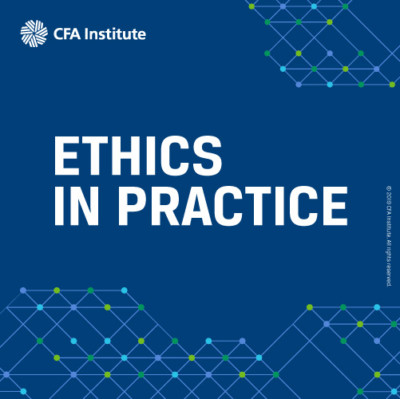Ethics in Practice: Publication of Investment Analysis. Case and Analysis–Week of 21 October
How did you do evaluating this week’s (21 October) case? Check out the analysis below.
Case
Guy is an investment analyst and member of his local CFA® Society. The CFA Society Board asks Guy to prepare an article on the future of the investment profession to be published in the society newsletter that is distributed to all members. The Board wants to publish the article for educational purposes and to generate a discussion among members at its next society luncheon. Guy agrees and drafts the article for no compensation. The article contains a list of references. After the article appears in the society’s newsletter, a research and consulting firm complains to the society’s Board that Guy copied or lightly paraphrased several sections of the article directly from two of its own reports without citation or acknowledgement. By comparing the contents of Guy’s article with the references and other sources available online, the Board finds many additional instances in which Guy directly incorporated passages into the article with only slight changes. Guy’s actions are
- acceptable because he did not accept compensation for the article and it did not go to clients.
- acceptable because he listed references at the end of the article.
- acceptable because the reference material he copied was publicly available on the internet.
- not acceptable.
- none of the above.
Analysis
This case relates to misrepresentation and plagiarism. CFA Institute Standard I(C): Misrepresentation prohibits members from making any misrepresentations related to investment analysis or other professional activities. This Standard also prohibits plagiarism in the preparation of material for distribution. Plagiarism is copying or using in substantially the same form materials prepared by others without acknowledging the source of the material or identifying the authors.
In this case, Guy presented the passages of other research in his article as if they were his own writing and insights without the permission or proper identification and attribution of the original sources. The fact that he voluntarily wrote the article for his CFA Society for education and discussion purposes and that it was not provided to clients is irrelevant. The fact that the research he plagiarized is publicly available on the internet also does not alter his responsibility to properly acknowledge the authors of content that is not his own. Although Guy did include references to source materials, he did not provide a citation for those passages that he included, essentially word-for-word, in the article. As a result, he violated the CFA Institute Code of Ethics and Standards of Professional Conduct. Because his violations were included in and directly tied to a CFA Institute publication, he also likely violated Standard VII(A): Conduct as Participants in CFA Institute Programs by engaging in conduct that compromises the reputation and integrity of CFA Institute. Choice D is the best choice.
This case is based on a disciplinary action taken in September 2019 by the CFA Institute Professional Conduct Program.
Let us know what you think of Ethics in Practice by taking this short survey.
Have an idea for a case for us to feature? Send it to us at [email protected].
More About the Ethics in Practice Series
Just as you need to practice to become proficient at playing a musical instrument, public speaking, or playing a sport, practicing assessing and analyzing situations and making ethical decisions develops your ethical decision-making skills. The Ethics in Practice series gives you an opportunity to “exercise” your ethical decision-making skills. Each week, we post a short vignette, drawn from real-world circumstances, regulatory cases, and CFA Institute Professional Conduct investigations, along with possible responses/actions. We then encourage you to assess the case using the CFA Institute Ethical Decision-Making Framework and through the lens of the CFA Institute Code of Ethics and Standards of Professional Conduct.
Image Credit: ©CFA Institute


B. , as the references provided does not lead to Misrepresentation as per Std. I (C).